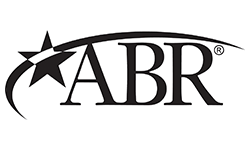9 Things Home Insurance Covers (Plus 9 Costly Things it Doesn’t)
Your home is one of your largest assets, and homeowners insurance can help protect that asset. However, don’t assume that home insurance will cover every possible problem that could occur. If you wait until it’s time to file a claim to understand your coverage, it’ll be too late. You could lose valuables or end up with an unaffordable bill.
We’ll go over everything you need to know about home insurance, including what’s covered and what’s not, so you know what to expect and how to fill any coverage gaps.
Personal property: Mostly covered
Personal items such as furniture, clothes, and computers will be covered whether they’re in your home or not. However, some insurers limit the amount they’ll cover for belongings stored offsite or taken with you when you travel.
Most policies also only offer the fair market value of your personal belongings in the case of a covered loss. That means your payout won’t cover the cost of buying the item new, but rather the depreciated value. Note that none of these items will be covered if they’re damaged in an excluded event, such as a flood.
1.) High-priced valuables: Usually not covered
Items such as expensive jewelry, fine art, antiques, furs, collectible items, musical instruments, firearms, high-end cameras, and silverware are typically subject to sub-limits under a homeowners policy. Even if you have a $25,000 limit for your personal belongings, your insurance company may only cover up to $1,500 in fine jewelry.
If you have an expensive engagement ring or another valuable item, you can purchase a rider, endorsement, or other add-on to cover these items. You might also want to add coverage for any business equipment, which typically has a sub-limit.
2.) Your car: Not covered
Damage or theft of your car itself will not be covered under your home insurance policy. That’s why it’s important to choose the best car insurance for your needs. If your phone or other belongings are stolen out of your car, however, you’ll typically have coverage for those items up to the limits of your policy.
3.) Your boat: Usually covered
Boats and boat trailers are typically covered under your homeowners insurance. A sub-limit will apply, so you should consider purchasing a separate policy if you have a large or fast boat. Note that liability coverage for your boat is not typically included, but you can add it.
4.) Your bicycle: Usually covered
Your homeowners insurance will cover the value of your bicycle if it’s stolen or damaged by a covered loss. If you have a particularly expensive bike, you may need an extra endorsement.
You’ll also be covered under the liability coverage section of your policy if you injure someone while riding your bike. If someone hits your bike with their car, the property damage liability portion of their car insurance policy will pay for the damage.
5.) Replacement cost: Not usually covered
Most home insurance policies don’t automatically include replacement cost coverage for your personal belongings. If you have a five-year-old TV that incurs water damage, you won’t get the amount of money you paid for it when it was new. Instead, the amount you’ll get is basically what your TV would sell for at a pawn shop. You will need to add replacement cost coverage if you can afford it.
6.) Fire: Usually covered
Homeowners insurance covers accidental fires in the home from a variety of causes, including wildfires. Your home, other structures on your property, and personal belongings are all covered.
You can also get compensated for living expenses you incur while waiting for your home to be rebuilt, such as hotel bills and food. However, you won’t be covered if someone in your household started the fire deliberately (arson) or if your home was vacant for over 30 days.
7.) Earthquake damage: Not covered
A standard policy doesn’t cover earthquake damage, so if your personal belongings or even the structure of your home is damaged by an earthquake, you’re out of luck. If you live in an area prone to earthquakes, like California, you should purchase an earthquake endorsement or a separate policy.
8.) Water damage: Usually covered
Sudden and accidental plumbing damage is typically covered by homeowners insurance, like if your water heater explodes or a pipe bursts. However, if your insurer decides the water damage was a result of poor maintenance, you won’t get a payout. Make sure to fix that hole where the rain gets in so you won’t be worried about your homeowners insurance denying your claim.
9.) Flood: Not covered
Most homeowner policies don’t cover damage from a natural flood, so it’s a good idea to buy flood insurance if you’re in an area with a high flood risk. It may even be required by your mortgage lender. Most flood insurance policies are offered through the National Flood Insurance Program (NFIP). If you live in an at-risk area, you’ll likely qualify for flood insurance.
10.) Sewer backup: Not covered
Coverage for water damage from an outside source like a sewer or drain is not typically included in a standard homeowners insurance policy. However, you can often add sewer and backup coverage to your policy for an extra cost.
11.) Natural disasters: Usually covered
Hurricanes, hail, lightning, and other natural disasters are typically covered by home insurance. The only exceptions are any perils specifically excluded from your policy (like mudslides and sinkholes), war, and nuclear accidents.
12.) Vandalism: Covered
If your home is vandalized, your insurance company will pay for the damage to your home and personal belongings. The exception is if someone in your household or an additional insured vandalizes your home or belongings.
If your child decides to paint all over your walls and furniture, you’ll have to cover those damages yourself. But if your neighbor’s teen eggs your house, you can get compensation for those damages, as long as you didn’t leave your home vacant for longer than 30 days.
13.) Damage from neglect: Not covered
Your home insurance company will deny your claim for any damage caused by neglect. This can include water damage or mold growth resulting from failing to fix a leaky pipe. That’s why it’s important to budget for emergency repairs.
14.) Injury to others: Usually covered
A standard homeowners insurance policy includes medical payments for others. If a friend or neighbor falls down your stairs or slips on your sidewalk, your homeowners insurance will pay for their medical bills up to the limits in your policy.
15.) Injury to your family: Not covered
If you fall down your stairs or slip on your sidewalk, your home insurance won’t cover your medical bills. Similarly, if your child or your pet is injured, home insurance won’t cover it. However, your health insurance coverage can help with your family’s medical bills, and pet insurance can protect your pet.
16.) Pet or pest damage: Not covered
If your dog destroys your Jimmy Choos or leaves a stain on your sofa, don’t expect your insurance company to shell out for a replacement. Pet insurance won’t cover pet damage, either.
Pest damage, such as a bed bug infestation or termites, also won’t be covered by home insurance. However, damage from a wild animal may be.
17.) Lawsuits: Usually covered
If you injure someone or damage their property, they might file a lawsuit against you. In this case, your homeowners policy will cover your legal defense and judgments against you up to the limits of your policy.
Examples are if your dog bites your neighbor (if it’s not an excluded breed) or your kids’ baseball breaks a neighbor’s window. However, you wouldn’t be covered if your spouse gets angry at your neighbor and assaults them since the injury was intentional.
18.) Bottom line…
One of the biggest mistakes you can make as a homeowner is not reading your home insurance policy. Take the time to familiarize yourself with what’s covered, so you don’t end up facing unaffordable costs. If you notice gaps in your insurance coverage, take action with additional riders or policies so you’re well-prepared. Don’t forget to review your car insurance policy as well, and shop around for the best rate and coverage.




